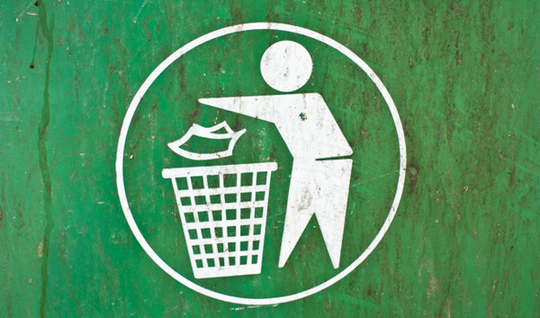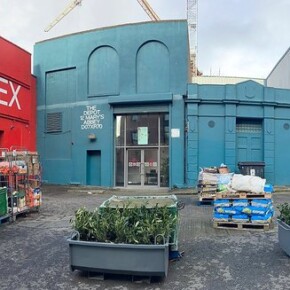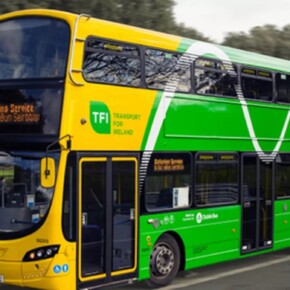Litter bugs!
Dublin People 23 Aug 2014
DUBLIN has earned its
‘dirty old town’ moniker in this year’s IBAL Litter Survey, with parts of the Southside letting the side down.
According to the latest survey by business group Irish Business Against Litter, while Ireland’s towns continue to get cleaner, the main cities remain littered.
Parts of Dublin, Cork and Limerick occupy the six lowest positions in the table of 40 areas surveyed, with Tallaght joining Dublin’s North Inner City and Farranree in Cork at the very bottom.
While the North Inner City and Farranree were exposed as
‘litter black spots’, Tallaght did not fair much better as it was
‘littered’.
Kilkenny and Cavan were once again Ireland’s cleanest towns, with Killarney, Tramore and Longford among the 18 towns to be deemed cleaner than the European average.
By contrast, Tallaght, Dublin’s North Inner City and Farranree were rooted at the foot of the table, with most having deteriorated since last year.
“There has always been a disparity between cities and towns, but this survey shows the gap in cleanliness is as wide as ever,
? said Conor Horgan of IBAL.
“We’re just not seeing the progress in cities that we need. While tourist areas generally have fared very well, how can we project Ireland as a clean country to visit if large parts of three main cities are littered?
?
Noting a
“disappointing slip in performance in Dublin City
?, the report by An Taisce cited Kilmainham and areas near the Guinness Storehouse as littered, alongside Talbot Street and Amiens Street.
“Dublin can no longer be called
‘clean’,
? the report finds.
“Less than half the sites surveyed got the top litter grade and even some of the moderately littered sites could easily become heavily littered if not addressed, for example, May Lane, Watling Street and Market Street South.
“It is a pity that the tourists visiting the Guinness Storehouse (the No 1 fee-paying tourist destination) are presented with such a littered environment.
“The residential areas of St Augustine Street and
‘Old Kilmainham’ were both seriously littered sites. On the positive side, O’Connell Street was in very good order and clearly a close eye is kept on such a busy street.
?
There was a better result for Dun Laoghaire, which scored very well as it improved on its 2013 result.
“Some areas were being worked upon (for example the People’s Park) and the surveyor noted what seems like a new initiative with regard to dogs, ie
‘Green Dog Walkers’: perhaps this is something that could be adopted in other locations?
“George’s Street Lower was in good order but the high number of vacant outlets was very noticeable. The L-shaped laneÂway from York Road to George’s Street Lower has relapsed to its seriously littered state.
?
Referring to Tallaght, the report said it was a poor result with just three top ranking sites out of 10.
“Recent results for the area have been particularly disappointing, as it had been previously deemed clean,
? the report finds.
“The presence of two seriously littered and two litter black spots brings down the overall ranking significantly. Two of the moderately littered sites could easily be top ranking with a little extra care and attention.
“The residential area of Brookfield View and environs was in a poor state with the site opposite subject to dumping.
?
The survey found that sweet papers were by far the most common form of litter, followed by cigarette butts, fast food wrappers and chewing gum. Most recycling areas were littered, with car parks and residential areas more likely to be littered than other sites.
Mixed results for Northside areas in litter survey
THERE was mixed news for Northside areas when results from the latest survey by Irish Business Against Litter (IBAL) were announced last week.
Swords was one of 18 towns deemed cleaner than the European average while Dublin Airport and Environs was considered to be clean to European Norms.
However, North Inner City Dublin continues to be rooted to the foot of the table after being exposed as a litter blackspot.
The survey found that sweet papers were by far the most common form of litter, followed by cigarette butts, fast food wrappers and chewing gum.
Most recycling areas were littered, with car parks and residential areas also more likely to be littered than other sites.
Fingal County Council’s operations department welcomed the results which shows that the county continues to uphold a high standard of cleanliness by national and European comparisons.
Michael Lorigan, Director of Operations with the Council, said:
“We welcome IBAL’s report and we will endeavour to maintain and improve on the standards we are setting for litter management in Fingal.
?
Fingal County Council’s environmental awareness officer, Edwina Dunford, urged members of the public to continue to show good example by using public bins provided for all kinds of litter and to take rubbish home where bins are full.
“Education is key in the battle against litter,
? said Ms Dunford.
“The Green Schools programme in Fingal has been phenomenally successful with close to 60 flag renewals expected next year.
“We will also be running several awareness campaigns targeting adults this autumn in cinemas and on radio and we will continue to promote personal responsibility as an important way of helping the council to tackle the ongoing problem of litter.
?
Noting the
‘disappointing slip in performance in Dublin City’, the report by An Taisce cited Talbot Street, Amiens Street, Kilmainham and areas near the Guinness Storehouse as littered.
Conor Horgan of IBAL said:
“There has always been a disparity between cities and towns, but this survey shows the gap in cleanliness to be as wide as ever.
“We’re just not seeing the progress in cities that we need. While tourist areas generally have fared very well, how can we project Ireland as a clean country to visit if large parts of three main cities are littered?
?
As to the causes of the urban-rural split, IBAL contends that residents’ associations, tidy towns groups and other volunteers are compensating for the scarcity of resources in local authorities in many towns, whereas these groups are often absent in city areas.
“A single tidy towns committee can make an enormous difference to the cleanliness of any given town,
” said Mr Horgan.
“In cities, communities tend to be less cohesive and relying on volunteers to clean up a large urban area is not feasible.
“However, establishing such groups has to be part of any urban authority’s plan in the current cost environment.
?
Mr Horgan said it’s not just the physical work these groups carry out, it’s the sense of responsibility they create, which rubs off on the whole community.
“If people see their neighbours picking up litter, they are less likely to litter themselves,
? he added.











